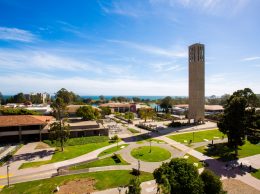Bank moves to seize Saabs at port
IN THIS ARTICLE
- Banking & Finance Topic
- Stephen Nellis Author
By Stephen Nellis Friday, January 13th, 2012
A bank backed by Uncle Sam is suing to seize a stash of Saab vehicles at the Port of Hueneme as the iconic Swedish car brand heads for the sunset.
Ally Financial, a bank three-quarters owned by the U.S. Treasury, wants court approval to take control of 151 vehicles being stored at the port by Saab Cars North America, the domestic arm of the beleaguered Scandinavian automaker. The bank claims the cars are collateral for $61 million in financing on which Saab defaulted.
Ally sought control over the vehicles in a lawsuit filed in Ventura County Superior Court on Dec. 27, marking the latest in a series of blows for Saab. The niche brand’s demise was all but assured on Dec. 19, when it’s main corporate entities filed for bankruptcy protection in Sweden.
Unlike its Swedish parent, the U.S. arm of Saab did not file for bankruptcy. Instead, it retained a receiver, Michigan-based McTevia & Associates, to deal with creditors and, most likely, liquidate its inventory of cars and parts.
That is what kicked off the dispute with Ally. The bank alleges that in early December, it demanded that Saab North America surrender the vehicles as collateral after it missed a $1.1 million payment on the $61 million in financing. Ally concedes that the 151 vehicles at Port Hueneme alone are not worth enough to pay down the loans, and its lawsuit suggests it has taken similar action at “several ports of entry in the United States.”
Ally says the missed payment triggered a default. Ally alleges Saab transferred the vehicles to McTevia to oversee an eventual liquidation. McTevia instructed port officials to deny it access to the vehicles, according to court filings by Ally.
Both sides declined to comment for this story because the litigation is pending. But the fight largely stems from the same economic meltdown that forced Detroit-based General Motors into bankruptcy.
Ally Financial is the new name of GMAC, GM’s in-house finance arm for consumers and dealers until it spun off in 2006. By that time, its books had become bloated with questionable home loans in addition to its automotive loans.
As GM teetered near collapse, GMAC vowed it would not follow its former parent into bankruptcy and took $17.2 billion in federal bailout funds in December 2008. An oversight panel later questioned whether the Bush administration instead should have pursued a strategic bankruptcy — the fate that befell GM in 2009.
Saab, a niche player with a small-but-loyal U.S. following, was part of the GM family from 1989 until 2010. Initially, life under the GM umbrella was good for the quirky sports sedans, but as GM crumbled, the Swedes suffered.
“When GM took it over, the one thing it did was to give Saab credibility — with warranty work, for example, a small company is always suspect,” said John Masterson, a retired auto dealer who sold Saabs. Now a Ventura County-based automotive consultant, he added that GM had “so many other things going on that it basically ignored Saab and allowed it to collapse.”
In 2010, Saab was bought by a group of Scandinavian investors after GM delayed a deal by protesting any involvement from Chinese firms. But it proved too late as production sputtered to a close without steady financing. While financiers pick through the rubble for valuables, dealers and customers will be left in the lurch. Model years up until 2009 are supported by GM warranty service, but it’s not clear how 2010 and 2011 years will be supported. And even dealers who might be inclined to brave warranties on their own might not have access to parts if the creditors foreclose on tooling and factories.
“It’s a very loyal group of people that love Saab,” Masterson said. “The new cars coming up were very sellable, and I think Saab would have been able to keep their niche in the market had they been able to get their capital in place.”












